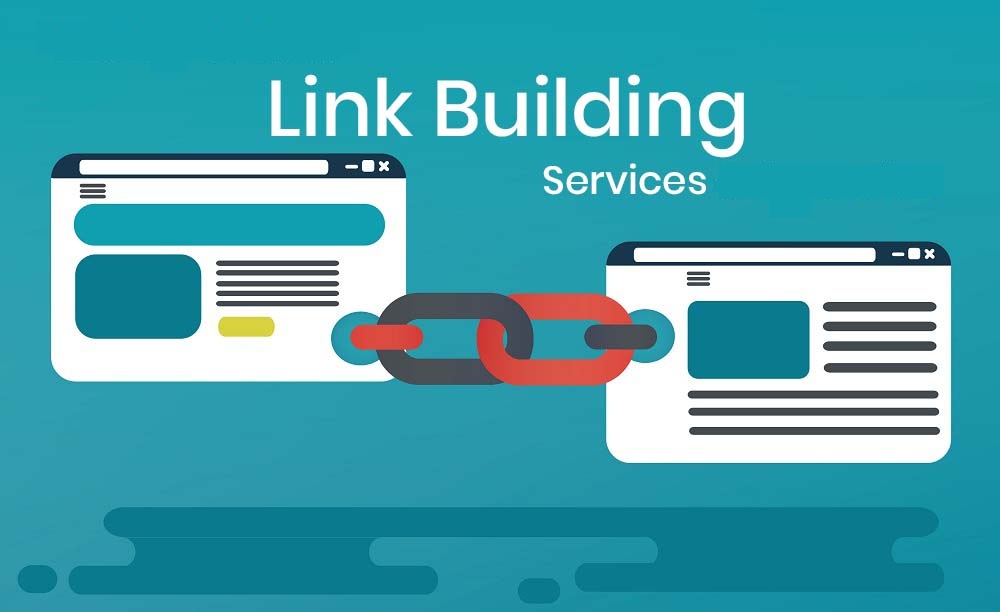Digital engineering is an approach that involves the use of next-gen technologies, digital infrastructure, data, and models to transform legacy infrastructure and modernize applications by effectively integrating specialized teams and disciplines, ensuring business continuum, increased profitability, and improved security. It leverages data and technology to develop solutions and platforms by applying the principles of software product engineering to enable better user experiences and outcomes. Digital engineering can help engineers design more efficient, reliable, and scalable systems than traditional methods. It also allows collaboration tools and cloud-based platforms that help work together in real-time, share code, and collaborate on complex projects. The goal is to improve workflow efficiency, accuracy, and effectiveness from the initial design phase to the final product. A robust digital engineering strategy is ideal for overcoming digital transformation implementation challenges and maximizing value.

Content
Need for digital transformation
Digital transformation changes how organizations operate and deliver customer value. Rapid changes in technology and the increasing expectations of customers, who demand more convenient, personalized, and efficient services, lead to a need for digital transformation. Customer behavior has evolved over the past decade. Thanks to digital channels, customer behavior has grown tremendously over the past decade, through which research and purchases of products have been effortless, leading them to expect seamless and personalized experiences across all touchpoints. As a result, companies must meet these expectations to retain their customers.
Through digital transformation, companies can open new revenue streams and create new business models through digital technologies. As a result, they can innovate new products and services to reach new customers in ways that were not previously possible. By leveraging automation and analytics, businesses can enable operational efficiency, cost savings, streamlined processes, and better decisions.
The role of a Digital Engineer
Digital engineers develop, design, and implement digital products and platforms using full lifecycle digital transformation frameworks, from concept to implementation. They can design system architecture, engineer innovative solutions, & offer sustained support for continuous improvement.
Digital engineers work on digital solutions in multiple industries ranging from OTT platforms, self-driven cars, predictive maintenance of vehicles, CRMs, security, energy management, and analytics to banking modernization. Businesses increasingly rely on technology to make data-driven decisions and operate efficiently to compete in the market, making the role of a digital engineer more critical.
Digital Engineering tools
Digital engineering tools play a vital role in today’s rapid technological advancements. It helps digital engineers to create and evaluate designs, analyze, and test complex systems accurately and cost-efficiently.
Some of the commonly used digital engineering tools include:
- Integrated Development Environments (IDEs): IDEs provide a comprehensive environment for software development. It includes a code editor, debugger, and build automation tools.
- Version Control Systems (VCS): VCS enables tracking changes to the source code and collaborating with team members. Git, Subversion, and Mercurial are some of the VCS tools.
- Continuous Integration and Continuous Deployment (CI/CD) tools: These tools automate the build, testing, and deployment process to ensure updation in software.
- Model-Based Design (MBD) tools: MBD models help engineers create models of the software system and simulate and test its performance before deployment.
- Requirements Management tools: Software engineers manage and track the software requirements to ensure the system meets the stakeholders’ needs.
- Automated Testing tools: Testing tools are vital for testing, helping software engineers identify and fix issues quickly and efficiently.
Lifecycle of a Digital Asset
The asset life cycle refers to the duration of an asset from acquiring to its disposal. Performance and efficiency affect the overall lifespan of an asset. Understanding an asset’s different phases is crucial to optimize and achieve better outcomes. Every asset goes through the design, engineer and sustain phases.
- Design phase
Also, the first stage of an asset life cycle, the design phase, helps identify the requirements of the asset and helps create a design that meets the requirements. In this phase, some tasks include feasibility studies, conceptual design, detailed design, and risk assessment. Any design flaws are identified at this stage to avoid increased costs, longer project timelines, and reduced asset performance. - Engineer phase
The second phase is where the asset is in construction per the design. Procurement, construction, and commissioning are a part of this phase and are important to ensure the construction of the asset as per design specifications to achieve optimal performance with minimal risks. - Sustain phase
Operational maintenance, repair, and replacement are a few tasks in the sustain phase. Design and engineer phases are directly responsible for the success of this phase since they detect any flaws, and a lack of them can result in increased maintenance costs and reduced asset performance.
Digital Thread – Role & Importance
A digital thread is best described as an end-to-end digital representation of a product or asset to improve visibility, efficiency, and collaboration across the supply chain. It offers an integrated view of the digital asset throughout its lifecycle, from design to engineering to sustenance.
A few benefits of a digital thread are better collaboration and communication between different departments and improved productivity and efficiency. It enables the automation of processes, provides real-time data, ensures better control & visibility, and identifies discrepancies, thereby reducing the risk of costs and delays. Digital thread in manufacturing allows seamless integration of systems through technologies such as the Internet of Things, cloud computing, and Artificial Intelligence.
Digital Thread Benefits
Digital thread enables a seamless flow of information throughout the product lifecycle from the design phase to the delivery phase. It helps in real-time visibility of the entire product lifecycle and helps to make well-informed decisions with minimal delays and errors.
Real-time data helps identify potential problems so that corrective measures can be taken on time, thereby reducing scrap, rework, and wastage. Integrating digital threads with other systems/ technologies improves automation and efficiency, enhancing collaboration and communication between various stakeholders.
Digital Supply Chain and Manufacturing
Digitization has impacted the manufacturing and supply chain industry and changed how data and communication are handled, from raw materials to finished products. Real-time data and analytics have improved efficiency, optimized production processes, reduced wastage, and improved delivery times. Digital technologies also enable better communication between manufacturers, suppliers, and customers, lowering risks and delays.
A digital supply chain allows businesses to improve customer satisfaction and increased revenue, responding to market trends and customer needs faster. Digitalizing the procurement, warehousing, logistics, and assembling processes help improve visibility, agility, cost performance, and quality.
Industry transformation using digital twin
The digital representation that is dynamically updated to mimic the structure and behavior of the physical system that updates based on the data sourced by the physical system offers tons of benefits, such as resolving a technical problem and improving the performance and downtime of the machinery.
Digital twin refers to the virtual representation of a real-world entity or process. It can collect data from sensors and simulations to generate a model that helps analyze, test, and optimize a virtual replica. The data link of the original asset enables us to analyze the state of the object/ process by querying the data to affect the physical counterpart. The use of digital twins offers numerous benefits, with enhanced decision-making and operational efficiency being the most significant advantages.
Digital twin technology finds application in various industries, including healthcare, transportation, and manufacturing.
Analyzing the behavior of a system in real-time, training and testing new technologies and processes before their implementation are some areas where digital twins have made their impact.
Today’s technology-driven world has led companies to constantly look for ways to optimize their operations, increase efficiency, and enhance customer experience. The use of digital twins offers numerous benefits, with improved decision-making and operational efficiency being the most significant advantages.
Role of Digital Twin
Digital twin technology is becoming very crucial for the smooth operation of businesses across industries like construction, manufacturing, healthcare, and transportation.
The primary role of a digital twin is to enable predictive maintenance through continuous monitoring and analysis of real-time data through sensors and monitoring equipment. The virtual representation of physical objects is also beneficial in optimizing operations, improving efficiency, and enhancing decision-making.
The digital twin also plays a vital role in detecting potential problems, thereby preventing downtime, reducing costs, and extending the life span of the equipment. Specifically, in processes, digital twins help to model and test new processes, simulate traffic patterns on highways, or model the effects of treatments on a patient’s health.
Enhancing safety and reducing risks through virtual representation helps operators identify potential hazards so that the development of strategies can help mitigate them.
Benefits of using digital twins
- Improved customer satisfaction
Predictive maintenance, when paired with digital twins, helps to improve customer satisfaction through real-time data. While industries such as heavy machinery, electrical equipment, and pharmaceuticals benefit the most from digital twins, it is of top priority in the aerospace and defense industries due to its nature of work. - Enable decision making
Digital twins leverage real-time data and insights on the performance of buildings, vehicles, machines, and systems, facilitating informed decision-making. In addition, using digital twins helps to identify and address issues before they become root causes that may lead to increased cost and reduced efficiency.
For example, a digital twin can monitor the production line’s performance and identify issues before they get bigger, impacting downtime duration and disrupting production. It also helps simulate different scenarios by evaluating potential outcomes, enabling businesses to make well-informed decisions and optimize their operations.
Monitoring the performance of production lines allows manufacturers to identify potential problems before they cause significant disruption in production and lead to downtime. - Streamline operations
Digital twins help identify performance challenges in the systems and processes, thereby enabling the identification of bottlenecks and helping optimize processes, leading to improved productivity and reduced costs.
Leveraging advanced technologies such as Machine Learning, Artificial Intelligence, and the Internet of Things with digital twins helps simulate and optimize production processes, identify challenges, and provide insights on predictive maintenance.
Remote monitoring with reduced manual intervention helps improve overall efficiency, reduce downtime, lower costs, and increase productivity. - Better Customer Experience
Identifying areas of improvement and optimizing customer experience can be a lot easier when businesses use digital twins to find real-time insights into the performance of their systems and processes.
A service provider using digital twin to monitor the performance of its network to identify any issues in the performance and address them before it disrupts services and impact customer experience is an excellent example of using digital twins to drive customer experience. - Supply chain agility and resilience
The digital twin has been instrumental in helping businesses to gain visibility into their supply chain by calculating lead times to make real-time adjustments with their partners and vendors.
Digital twins play a vital role in transforming the product lifecycle in the manufacturing sector. The in-depth analysis facilitated by digital twin helps detect potential issues, reduce downtime, test new business opportunities, and customize production based on customer requirements. Maintaining connected heavy machinery is a lot easier with digital twin collecting and analyzing large volumes of data.
Shaping the future of businesses with digital twin & digital thread
Digital twin and digital thread technologies have revolutionized how businesses work through improved efficiency, automation, and innovation. The digital twin technology enables replica creation and provides real-time visibility and control over the entire product lifecycle.
Optimization of the production processes, minimal waste, and reduced lead times have considerably evolved how businesses operate. Experimentation was costly and time-consuming, and the digital twin technology has enabled businesses to experiment with new designs, processes, and materials to stay ahead of their competition.
Digital twin and digital thread technologies offer numerous opportunities and enable businesses to improvise and experiment with their product through improved collaboration, innovation, and productivity.
Embracing digital twins and digital technologies has enabled businesses to stay competitive and successfully shape the future of their business.
Is digital engineering in demand?
Integrating engineering practices with digital technology has transformed various industries, enabling them to remain competitive, adopt digital technologies, and hire skilled professionals with data analytics, cybersecurity, and machine learning skills to develop and maintain the systems. This has increased the demand for qualified digital engineers due to rapid adaptation to digital infrastructure with customers’ changing needs.
Conclusion
Digital engineering transforms engineers’ approaches to designing, developing, and delivering products and services. It can improve digital asset design & architecture, remove potential risks, and enhances predictability in performance and value. Companies can make data-driven decisions, leverage digital twins testing abilities, and reduce risks. As a result, they can secure their products, manage production complexities and accelerate time to market with good investment returns.

Frank Partnoy is a tech blogger who loves to share his thoughts about the latest gadgets and technology. He loves everything from smartphones, laptops, tablets and more!













